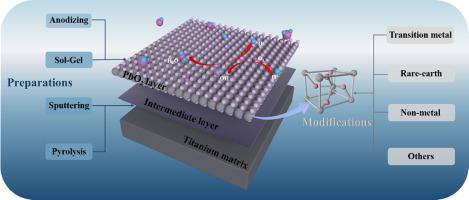Science of the Total Environment ( IF 8.2 ) Pub Date : 2021-09-04 , DOI: 10.1016/j.scitotenv.2021.150088 Qingqing Zhou 1 , Xule Zhou 1 , Ruihao Zheng 1 , Zifeng Liu 1 , Jiade Wang 1

|
Electrochemical oxidation (EO) based on hydroxyl radicals (·OH) generated on lead dioxide has become a typical advanced oxidation process (AOP). Titanium-based lead dioxide electrodes (PbO2/Ti) play an increasingly important role in EO. To further improve the efficiency, the structure and properties of the lead dioxide active surface layer can be modified by doping transition metals, rare earth metals, nonmetals, etc. Here, we compare the common preparation methods of lead dioxide. The EO performance of lead dioxide in wastewater containing dyes, pesticides, drugs, landfill leachate, coal, petrochemicals, etc., is discussed along with their suitable operating conditions. Finally, the factors influencing the contaminant removal kinetics on lead dioxide are systematically analysed.
中文翻译:

氧化铅电极在废水处理中的应用:综述
基于二氧化铅上产生的羟基自由基(·OH)的电化学氧化(EO)已成为典型的高级氧化工艺(AOP)。钛基二氧化铅电极 (PbO 2 /Ti) 在 EO 中扮演着越来越重要的角色。为了进一步提高效率,可以通过掺杂过渡金属、稀土金属、非金属等来改变二氧化铅活性表面层的结构和性能。这里我们比较一下二氧化铅的常用制备方法。讨论了二氧化铅在含有染料、农药、药物、垃圾渗滤液、煤炭、石油化工等废水中的 EO 性能及其合适的操作条件。最后,系统地分析了影响二氧化铅污染物去除动力学的因素。











































 京公网安备 11010802027423号
京公网安备 11010802027423号